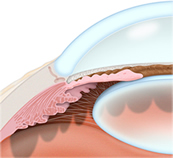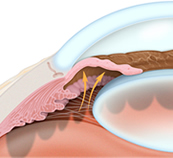Apgar score
The Apgar score is a simple assessment of how a baby is doing at birth, which helps determine whether your newborn is ready to meet the world without additional medical assistance. Your practitioner will do this quick evaluation one minute and five minutes after your baby is born.
The 1-minute score determines how well the baby tolerated the birthing process. The 5-minute score tells the health care provider how well the baby is doing outside the mother's womb.
In rare cases, the test will be done 10 minutes after birth.
This score – developed in 1952 by anesthesiologist Virginia Apgar and now used in modern hospitals worldwide.
What Does the Apgar Score Mean?
Apgar is an acronym, standing for the following criteria:
- Appearance
- Pulse (heart rate)
- Grimace (reflexes)
- Activity (muscle tone)
- Respiration (breathing effort)
A pediatrician, ob-gyn, midwife or nurse will assign your newborn an Apgar score from 0 to 2 on each of the five criteria, with a total of 10 possible points. The higher the Apgar score, the better your baby is doing.
Appearance / (Skin color)
- If the skin color is pale blue, the infant scores 0 for color.
- If the body is pink and the extremities are blue, the infant scores 1 for color.
- If the entire body is pink, the infant scores 2 for color.
Pulse / (Heart Rate)
Heart rate is evaluated by stethoscope. This is the most important assessment:
- If there is no heartbeat, the infant scores 0 for heart rate.
- If heart rate is less than 100 beats per minute, the infant scores 1 for heart rate.
- If heart rate is greater than 100 beats per minute, the infant scores 2 for heart rate.
Grimace (reflexes)
Grimace response or reflex irritability is a term describing response to stimulation, such as a mild pinch:
- If there is no reaction, the infant scores 0 for reflex irritability.
- If there is grimacing, the infant scores 1 for reflex irritability.
- If there is grimacing and a cough, sneeze, or vigorous cry, the infant scores 2 for reflex irritability.
- If muscles are loose and floppy, the infant scores 0 for muscle tone.
- If there is some muscle tone, the infant scores 1.
- If there is active motion, the infant scores 2 for muscle tone.
- If the infant is not breathing, the respiratory score is 0.
- If the respirations are slow or irregular, the infant scores 1 for respiratory effort.
- If the infant cries well, the respiratory score is 2.




















 Open-angle glaucoma is the most common type of glaucoma where the fluid in the eye drains too slowly through the network of tiny drainage channels, known as the trabecula. The pressure in the eye increases as the fluid in the eye continues to build. Loss of vision occurs gradually and the vision loss is not always noticed until it becomes irreversible. About 95 percent of glaucoma cases are due to open-angle glaucoma.
Open-angle glaucoma is the most common type of glaucoma where the fluid in the eye drains too slowly through the network of tiny drainage channels, known as the trabecula. The pressure in the eye increases as the fluid in the eye continues to build. Loss of vision occurs gradually and the vision loss is not always noticed until it becomes irreversible. About 95 percent of glaucoma cases are due to open-angle glaucoma. Angle-closure glaucoma occurs when the tiny drainage channels, known as the trabecula, become blocked which then causes a sudden rise in pressure in the eye. This condition is not common but when it occurs it requires immediate medical attention.
Angle-closure glaucoma occurs when the tiny drainage channels, known as the trabecula, become blocked which then causes a sudden rise in pressure in the eye. This condition is not common but when it occurs it requires immediate medical attention.




